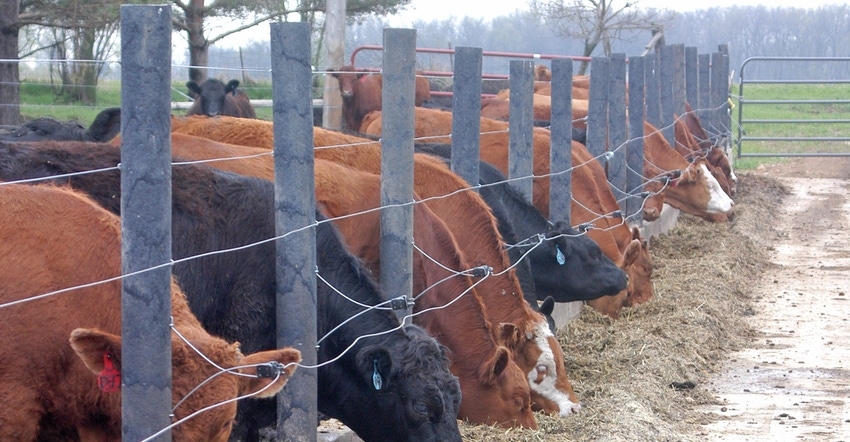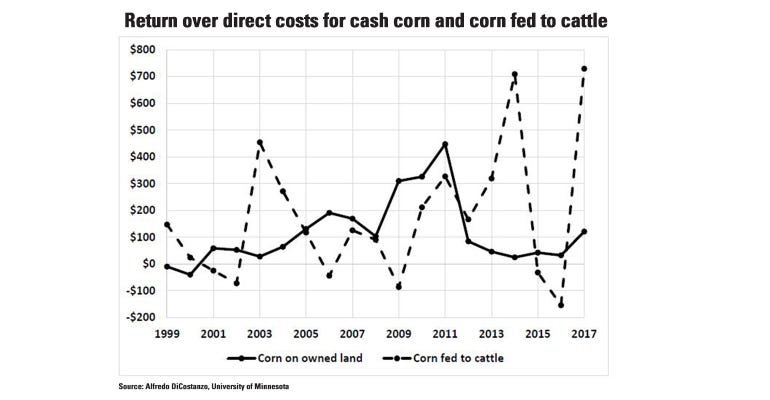
Five factors Warren Rusche, South Dakota State University Extension beef feedlot associate, says to consider when you are thinking about feeding cattle to add value to corn are:
1. The economics. “Dr. Alfredo DiCostanzo (University of Minnesota Extension professor-beef cattle nutrition and management) presented some interesting data at the 2018 Northern States Beef Conference on how cattle feeding fits into an integrated crop-livestock operation. Using historical closeouts from an industry database, he determined the net value of corn grain as cattle feed. He derived that value by subtracting all non-corn costs from cattle sales and added back the net value of cattle manure to meet phosphorus needs. He then compared those values on a corn feed value per acre basis to the FINBIN [Center for Farm Financial Management, University of Minnesota] return over direct costs for corn production on owned land.
“The net returns for the two different scenarios over the last 19 years are shown in Figure 1. Over that period the average return over direct costs per acre for corn marketed through cattle was $173 compared to $108 for cash corn. Those values do not include any efficiencies that might be gained by early harvest of high moisture corn, reduced drying costs, or reduced handling/shrink of the corn crop.”

2. The ups and downs. “One of the most striking features from this graph (Figure 1) is that marketing corn through cattle results in returns that are greater over time but also more variable. Adding a feedlot enterprise increases the exposure to cattle market risk and weather risks outside the normal growing season. Including mechanisms to mitigate the downside risk either through risk management tools or by simply having more working capital available is critical to avoid crippling financial losses.”
3. Your staying power. “While it is very easy to look at a chart and pick out the years where feeding cattle was highly profitable and the years where it made more sense to simply sell corn, it is much more difficult to do so in real-time. Jumping in and out with the idea of timing the market could easily result in missing the highs but still hitting unexpected lows. Taking the long view increases the probability of success over many years.”
4. Need for manure. “A portion of the added returns from feeding cattle comes from the cattle manure used to reduce the direct costs of growing corn. This is one of the key reasons that integrations of crops and livestock can work so well together. To optimize returns we can’t treat livestock manure as a waste product, but rather as a valuable resource. Calibrated applications based on accurate manure and soil sampling data as part of a management plan will win compared to a strategy of spreading on the most convenient fields.”
5. Your management ability and available resources. “There needs to be an honest assessment of management ability and available resources to determine the right enterprise mix. Many operations could benefit from diversification and integrating livestock and crops, but not all. These values are based on averages from two different databases and if the livestock or crops segment of the farm can’t both be average or better, the wiser course of action might be to specialize in where there is the best match between strengths and opportunities.”
About the Author(s)
You May Also Like






